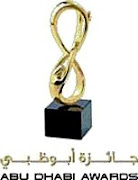
Reviving a timeless tradition in Dubai
By Shakir Husain, Staff Reporter GULF NEWS Published: February 28, 2008, 00:39
Dubai: The almost extinct Gulf heritage in pearl trading is set to be resurrected in Dubai. However, this revival is a far cry from the old days of pearl diving when divers spent weeks searching for the treasure hidden in oysters.
When the Pearls of Arabia project is completed in two years, creating a pearl business hub on "Antarctica" at The World manmade island cluster, the new face of the pearl trade in Dubai will reflect the progress the city has seen since the pre-oil era.
Led by the Dubai Multi Commodities Centre (DMCC), Pearls of Arabia is designed to serve as a hub for retail and wholesale pearl traders. It will also become a tourist attraction in the city, which is targeting 15 million tourists in 2015.
"This project is the first stage of Dubai's plan to re-establish the emirate as a centre for the global pearl trade," DMCC said.
Last year Dubai set up an exchange to provide a platform for pearl trading.
The 6,000-square-metre Pearl of Arabia features a themed cultural heritage centre, a performing arts theatre, an exhibition gallery and a seafood restaurant alongside boutiques to be run by top pearl fashion houses.
Dubai will invite leading international names in the pearl industry to set up shop in the city. Visitors will travel to the pearl destination by ferries that will serve The World archipelago of 300 islands.
Officials did not get into the specifics of the project, but made their ambitions clear.
Ahmad Bin Sulayem, executive chairman of DMCC, said Dubai is seeking "inspiration from our heritage to build a brighter tomorrow".
He said pearling was the lifeblood of Arabia less than a century ago and accounted for some 80,000 jobs in the UAE alone. Pearling represented 95 per cent of the country's revenues.
"Pearls of Arabia presents age-old wisdom in a modern and contemporary fashion to revive the region's historic legacy for the benefit of future generations," Bin Sulayem said.
DMCC did not say if pearl farming will be part of the project, which is being implemented in association with Australia's Paspaley Pearling Company.
"Historically, Dubai served as the world's hub in the trade of fine-quality natural pearls. Now, almost 100 years later, we are delighted to collaborate with DMCC to revitalise the region's traditional association with pearls," said Nicholas Paspaley, executive chairman of the Australian company.
"Together, we will resurrect Dubai's reputation as one of the world's premier and most important pearl destinations. Dubai will present to the world the best selection of pearls and pearl jewellery that the 21st century pearling industry has to offer, and will showcase the beautiful history and story of pearls," he added.
The UAE had some of the best pearls at the start of the 20th century, but the diving tradition died out in the wake of the wealth generated from oil.
Globally, pearl diving is a thing of the past. Australia has one of the world's last remaining fleets of pearl diving ships. Australian divers dive for south sea pearl oysters to be used in the cultured south sea pearl industry.
However, the Pearls of Arabia is not aimed at recreating the trade in the old style. "It will be a commercial hub with a modern facade," said Gaiti Rabbani, executive director of coloured stones and pearls at DMCC.
Industry award
Along with developing the pearl trade, Dubai will also institute an industry award that will attract global participation.
Dubai is using its strengths in the gold and diamond trade to make pearls a big business in the city.
"We will bring all elements of the jewellery trade together. We will use the same model that has been successful for other industries by offering tax-free benefits and easy rules," Rabbani said.
She said a set of standards will also be introduced to generate consumer confidence in the pearl trade.
DMCC is looking at introducing a uniform certification for pearls, based on globally accepted quality parameters.
The certification will be developed in conjunction with leading gem certification bodies and in consultation with local and international trade players.
History: A feature of life
Arabian pearling developed with the opening of the ancient Silk Route.
In the late 1940s and early 1950s, pearl diving was a key feature of life on the Trucial coast.
Around 80,000 men earned their living from the pearling trade, accounting for up to 95 per cent of national incomes. The Trucial States had 1,200 pearling dhows, of which 335 were from Dubai.
The pearl banks were generally some distance from the coast lying at depths of 46 to 120 feet.
The pearl banks of the Gulf provide the finest pearls in the world due to the formation of the seabed, the temperature and shallowness of the water.
Pearl diving was a hazardous business as navigation was limited to the stars, a simple compass and the captain's knowledge and experience of the pearl banks.
In the 1830-1900 period, output was worth an average of $1.75 million a year, rising to nearly $4 million in the first decade of the 20th century.
Sources suggest that in the Mumbai market, 1gm of fine Gulf pearls may have had the same approximate value as 320 grammes of gold or 7.7kg of silver in 1917.
At the turn of the last century, the UAE had a reputation for having some of the best natural pearls in the world.
By the early 20th century the pearl industry in the Gulf was at its height but it declined during the Great Depression of the 1930s and the development of the more affordable cultured pearl in 1921.
- Source: DMCC




















No comments:
Post a Comment